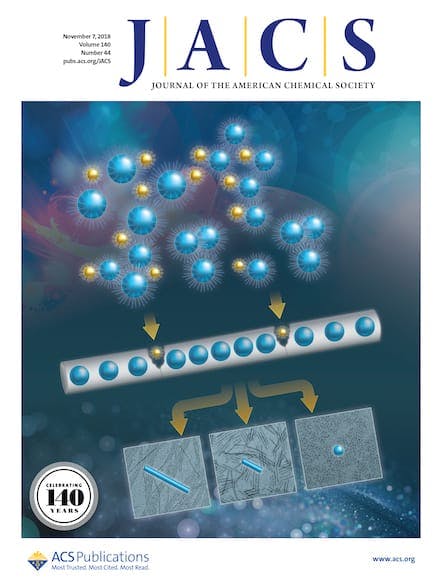Ten years ago, in a steaming volcanic mudpot in Italy, microbiologists discovered a bizarre bacterium—the first known organism that couldn’t live without lanthanides. To help it feed on methane, Methylacidiphilum fumariolicum relies on a methanol dehydrogenase (MDH) enzyme that has a rare-earth element such as cerium or lanthanum at its heart. Now, Eric J. Schelter of the University of […]

Ten years ago, in a steaming volcanic mudpot in Italy, microbiologists discovered a bizarre bacterium—the first known organism that couldn’t live without lanthanides. To help it feed on methane, Methylacidiphilum fumariolicum relies on a methanol dehydrogenase (MDH) enzyme that has a rare-earth element such as cerium or lanthanum at its heart.
Now, Eric J. Schelter of the University of Pennsylvania has made a complex that mimics the enzyme’s active site, shedding light on the lanthanide’s crucial role in the microbe’s metabolism.
Lanthanide ions have very poor bioavailability, because they tend to precipitate out of neutral water. But in the hot, acidic conditions of the Solfatara volcanic crater on the outskirts of Naples, hardy microbes have access to a rare-earth smorgasbord at concentrations of 2–3 µM. Indeed, M. fumariolicum depends on a supply of lanthanides to thrive. “I remember when I first heard about this, and I was just stunned,” says Rachel N. Austin of Barnard College, a metalloprotein expert who was not involved in the research.
MDH converts methanol into formaldehyde, a key step in methane metabolism. The enzyme contains a pyrroloquinoline quinone (PQQ) cofactor, which is normally bound to a calcium ion. In M. fumariolicum, though, X-ray crystallography has shown that a lanthanide ion takes calcium’s place.
To understand exactly how the lanthanide-MDH works, Schelter’s team developed a model compound that was much easier to manipulate than the enzyme itself. PQQ can bind to metal ions in many different ways, so the researchers created a more obedient stand-in without pyrrole or carboxylic acid groups, and with bulky cyclohexyl groups, to ensure it coordinated with a lanthanum ion in the right way. The resulting complex converted a benzyl alcohol—a convenient substitute for methanol—into its aldehyde and did so catalytically with the help of additional oxidant and base.
Density functional theory calculations based on the model complex helped the team to figure out the reaction mechanism, which involved a hydride transfer step. Schelter says that the lanthanum ion lowers the activation barriers to key intermediates in the mechanism, because it is better at accepting electron pairs from the ligand than calcium. “The bug is getting something better out of using the rare earths,” he says.
Austin says that model studies like this can help to address a fundamental question in biology: Do enzymes simply adopt the most available metal ions, or is nature more selective than that? Schelter’s model suggests that using a lanthanide in MDH, rather than calcium, could have given the mudpot bacteria an evolutionary advantage.
Meanwhile, M. fumariolicum is no longer unique. Last year, studies on water samples from the Deepwater Horizon oil spill in 2010 suggested that microbes feasting on methane released during the disaster had been using lanthanide-MDH. Even leaf-dwelling bacteria found on the campus of San Jose State University apparently use lanthanum with their MDH. “The microbiologists are finding these things everywhere,” Schelter says. “I think we’re just at the beginning of this story.”
This article is reproduced with permission from C&EN (© American Chemical Society). The article was first published on February 2, 2018.
